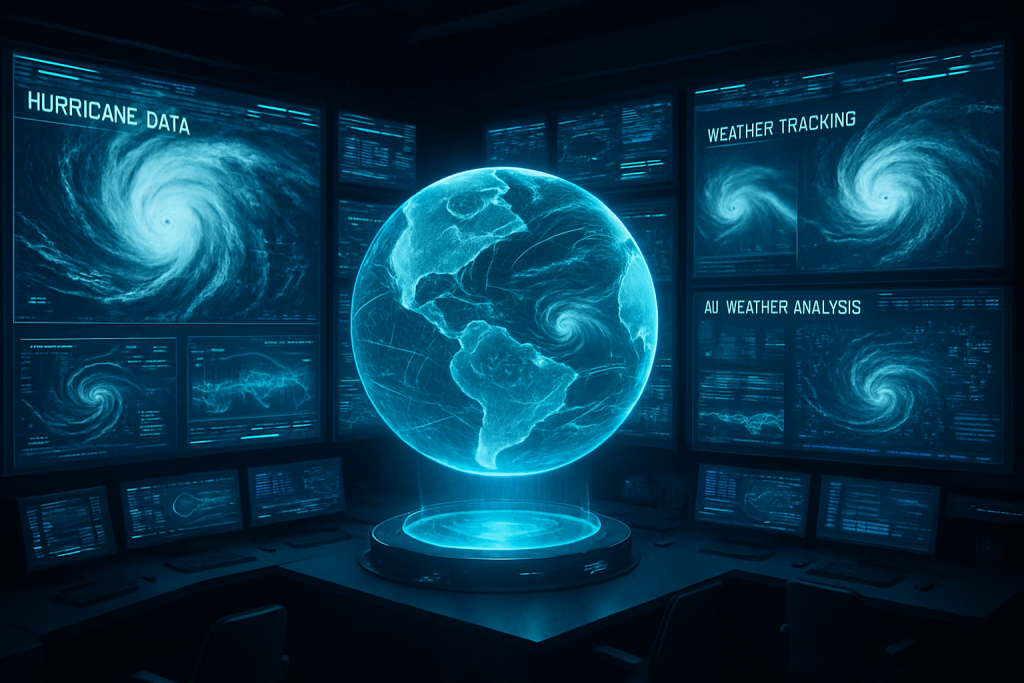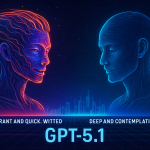The year is 2025. Remember those nail-biting days glued to the Weather Channel, watching spaghetti models swirl across the screen, each predicting a slightly different, potentially catastrophic path for an incoming hurricane? Well, those days might just be numbered, thanks to a game-changing announcement from Google DeepMind on November 16th. They’ve unleashed an AI-powered hurricane forecasting tool that’s not just playing catch-up with the old guard; it’s lapping them.
Think of it as Deep Blue, the chess-playing supercomputer that dethroned Garry Kasparov, but instead of pawns and rooks, it’s playing with wind speeds, barometric pressures, and satellite data. And the stakes? Far higher than a chess tournament. We’re talking about lives, livelihoods, and billions of dollars in potential damage.
Hurricanes, those swirling dervishes of destruction, have always been a formidable foe. They’ve shaped coastlines, rewritten history, and left countless communities reeling. Predicting their behavior has been a constant battle against chaos, relying on complex mathematical models that, while impressive, often take significant time and computational muscle to churn out results. Time, as anyone who’s ever faced an evacuation order knows, is a luxury you often don’t have.
This new AI tool changes the game. It’s like having a hyper-intelligent meteorologist who can process information at warp speed. Instead of relying solely on the traditional, computationally intensive models, DeepMind’s AI dives headfirst into a vast ocean of data: decades of historical hurricane patterns, current atmospheric conditions gleaned from weather balloons and buoys, and a constant stream of real-time satellite imagery. It’s the ultimate data buffet, and the AI has an insatiable appetite.
But what makes this AI so special? It’s not just about crunching numbers faster; it’s about understanding the underlying patterns. Think of it like this: a human meteorologist might see a rising sea temperature and predict a stronger hurricane. The AI sees that, too, but it also recognizes subtle correlations that might be invisible to the human eye- a slight shift in wind shear at a specific altitude, a change in ocean salinity hundreds of miles away, or even a seemingly insignificant atmospheric anomaly over the Sahara Desert. It’s connecting dots we didn’t even know existed, leading to more accurate and timely forecasts.
The implications are staggering. Imagine being able to issue evacuation orders hours, or even days, earlier than before. Picture emergency responders being able to deploy resources with pinpoint accuracy, knowing exactly where the storm surge will hit hardest. This isn’t just about better weather forecasts; it’s about building more resilient communities and saving lives.
But let’s be real. This isn’t just about altruism. There’s a significant financial angle at play here, too. The insurance industry, which has been hemorrhaging money due to increasingly frequent and severe weather events, is undoubtedly watching this development with bated breath. More accurate forecasting could translate into billions of dollars saved in avoided payouts, leading to lower premiums for homeowners and businesses. It’s a win-win, assuming the AI doesn’t start predicting *too* accurately and bankrupt the insurance companies altogether.
The energy sector also stands to benefit. Offshore oil rigs and wind farms are particularly vulnerable to hurricanes. With better forecasts, these companies can take proactive measures to protect their assets and minimize disruptions to energy supplies. This could lead to greater energy security and stability, especially in regions heavily reliant on offshore resources.
Of course, with any technological leap forward, there are questions to be asked. Will this AI exacerbate existing inequalities? Will wealthier communities, with access to the most advanced forecasting tools, be better protected than poorer ones? Will the reliance on AI lead to a deskilling of human meteorologists, creating a situation where we’re completely dependent on a black box we don’t fully understand? These are critical questions that need to be addressed as this technology becomes more widespread.
There’s also the ethical dimension. What happens when the AI makes a mistake? Who’s responsible when a predicted storm surge fails to materialize, leading to unnecessary evacuations and economic disruption? Or, conversely, what happens when the AI underestimates a storm’s intensity, leading to inadequate preparedness and tragic consequences? These are difficult questions with no easy answers, but they need to be discussed openly and honestly.
Looking ahead, the future of hurricane forecasting is undoubtedly intertwined with the continued development of AI. We can expect to see even more sophisticated models emerge, capable of incorporating even more diverse data sources and providing even more granular predictions. Perhaps one day, we’ll even be able to *influence* hurricane behavior, using AI to strategically deploy cloud-seeding technologies or other interventions to weaken storms before they make landfall. The possibilities, both exciting and potentially terrifying, are endless.
DeepMind’s hurricane forecasting tool isn’t just a technological marvel; it’s a symbol of our ongoing quest to understand and control the forces of nature. It’s a reminder that even in the face of seemingly insurmountable challenges, human ingenuity, coupled with the power of artificial intelligence, can make a real difference in the world. Now, if you’ll excuse me, I’m going to check the long-range forecast. Just in case.
Discover more from Just Buzz
Subscribe to get the latest posts sent to your email.


